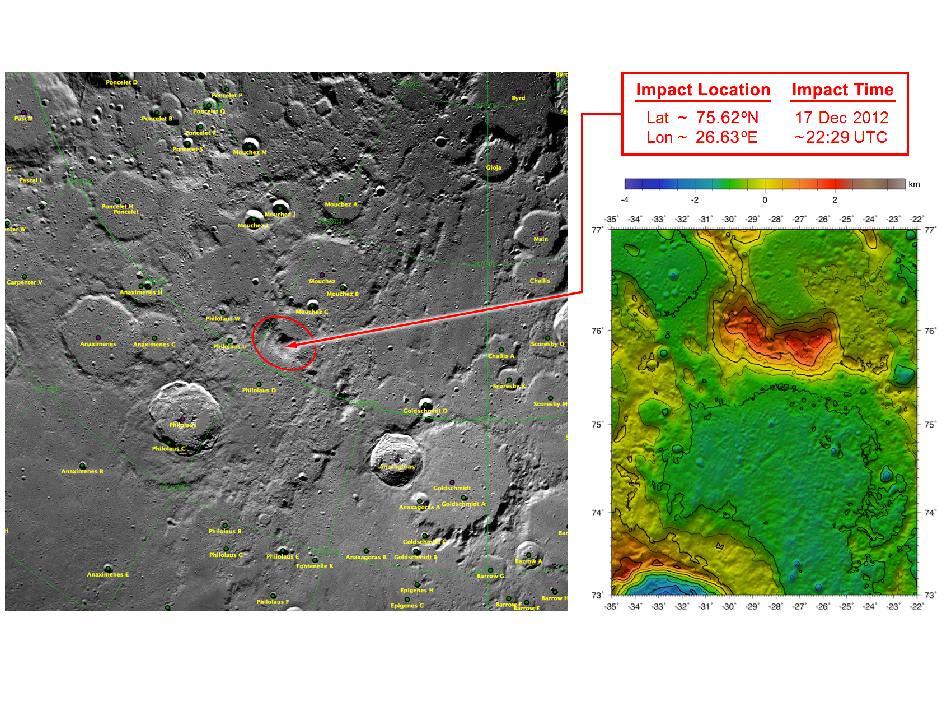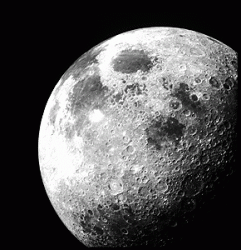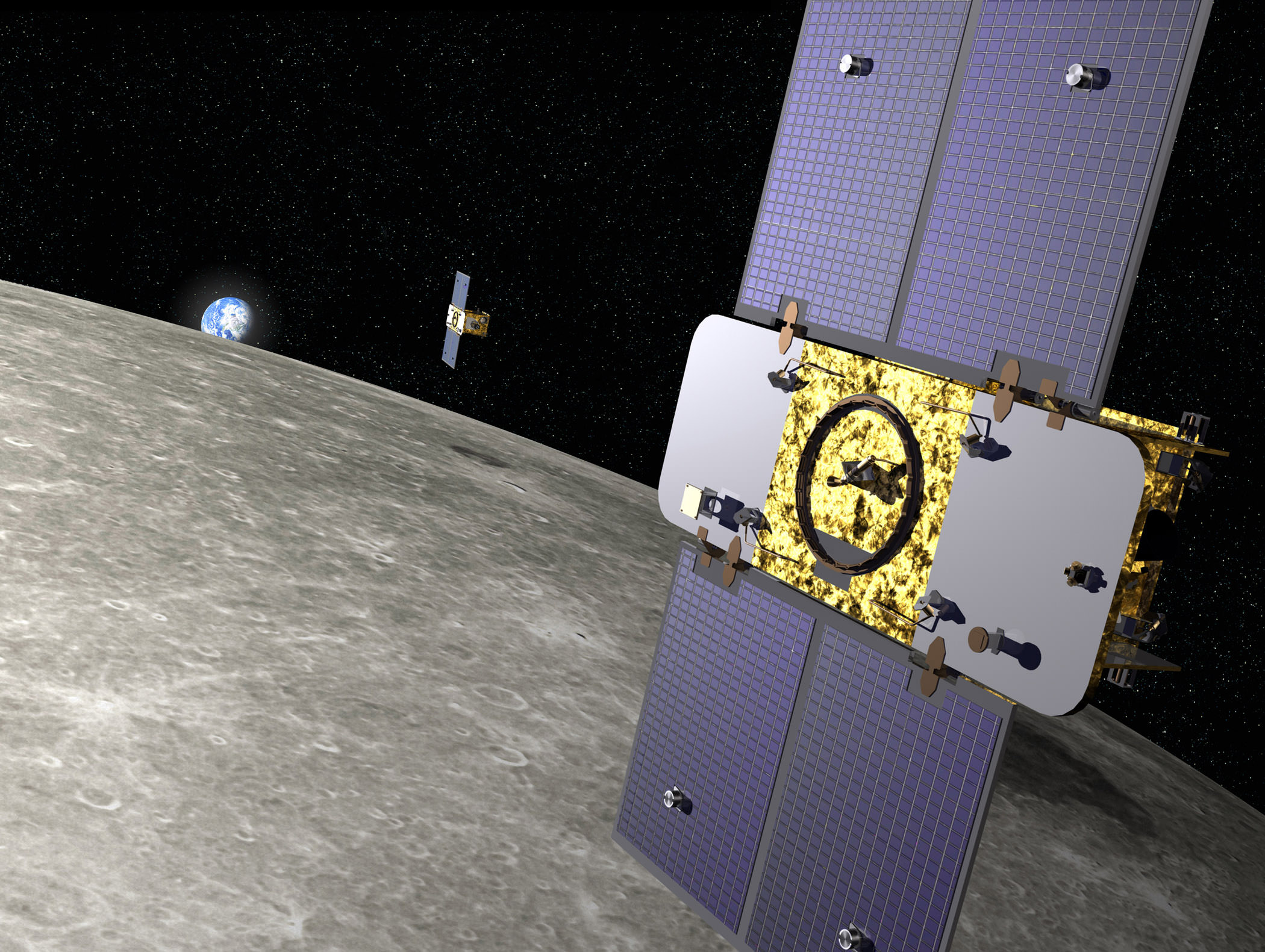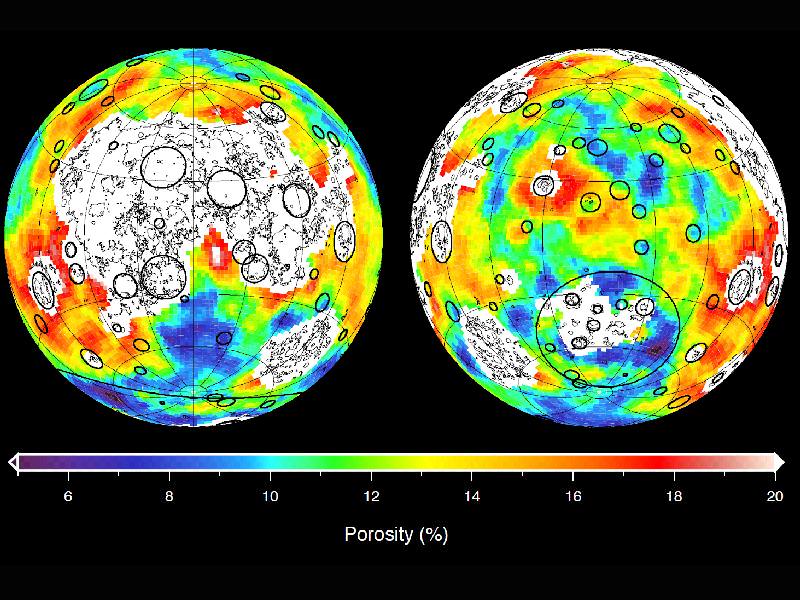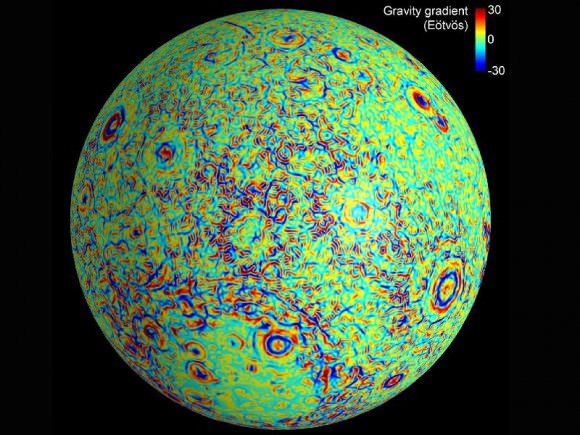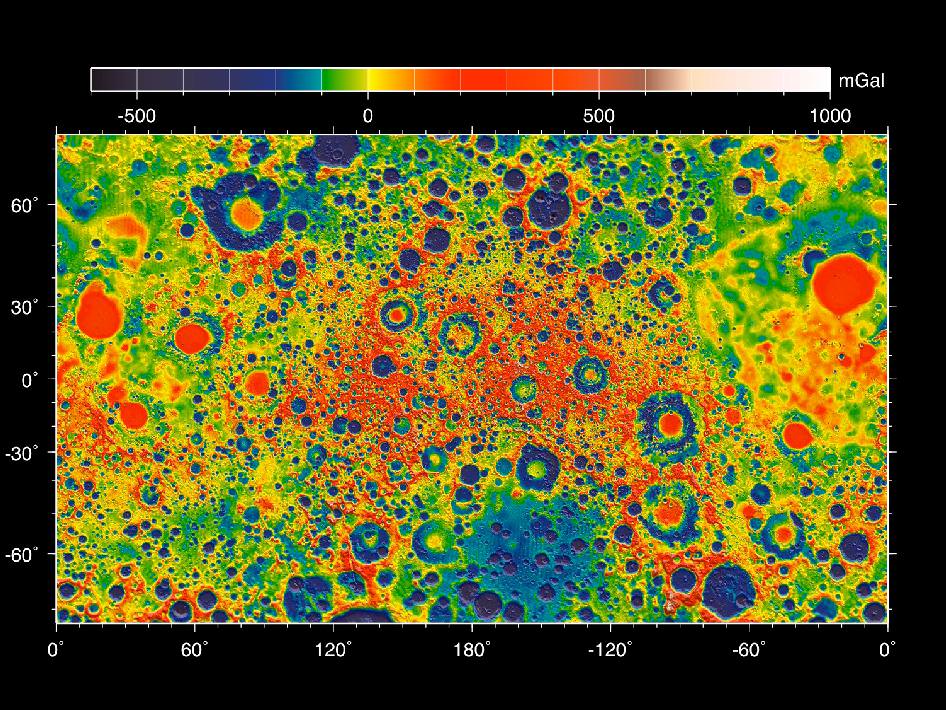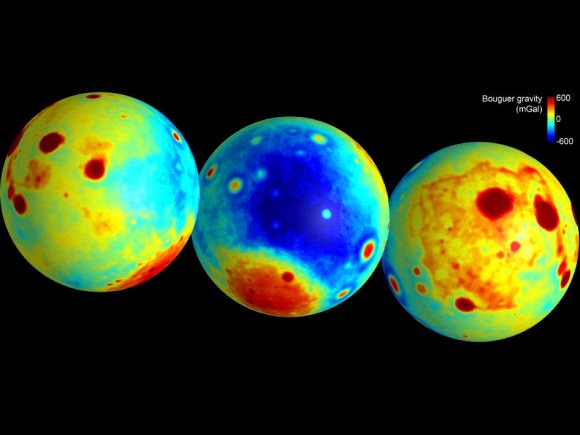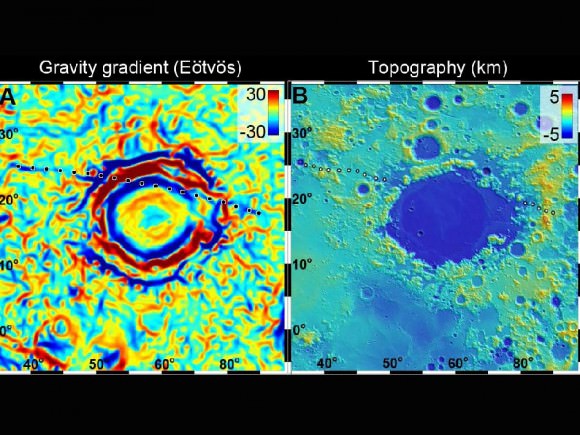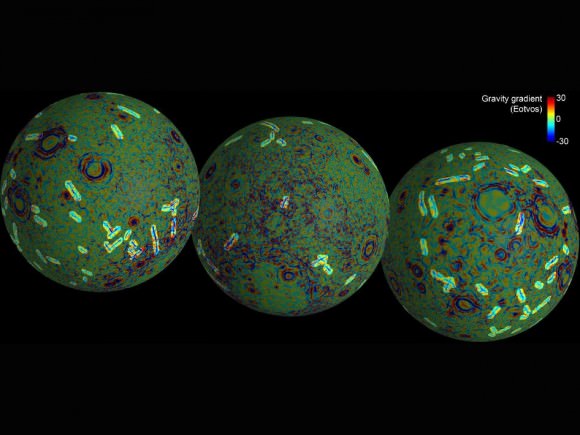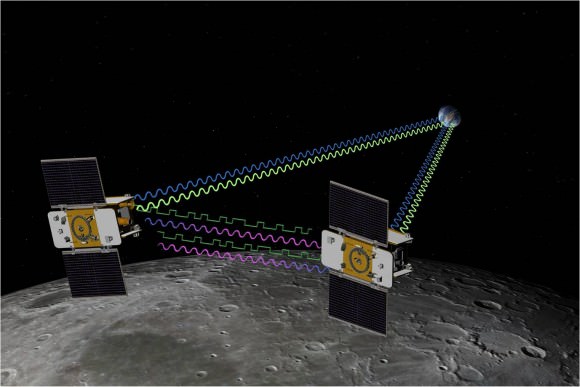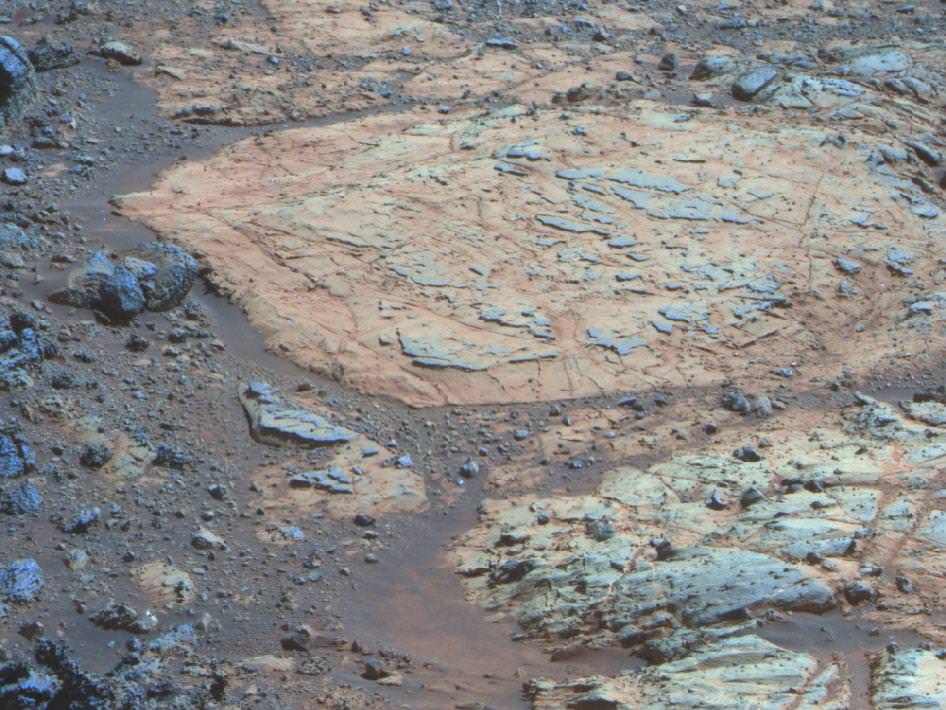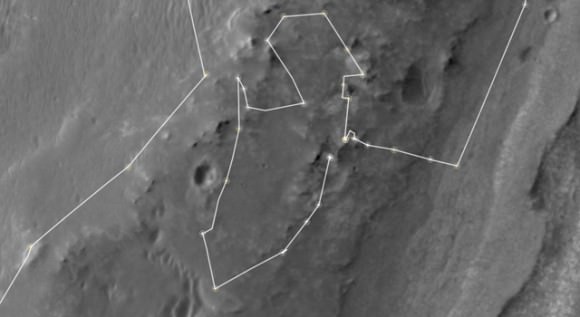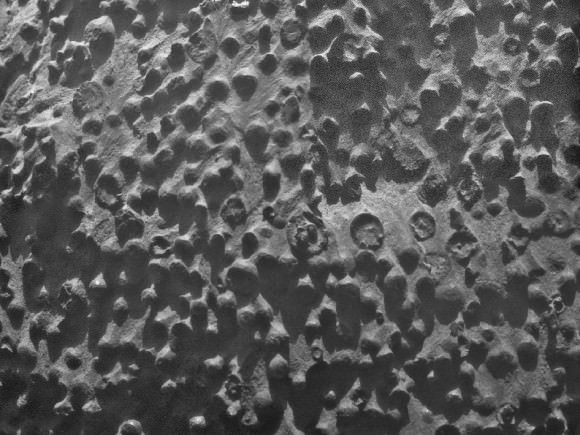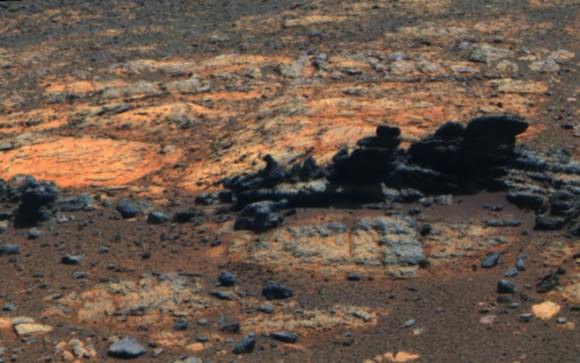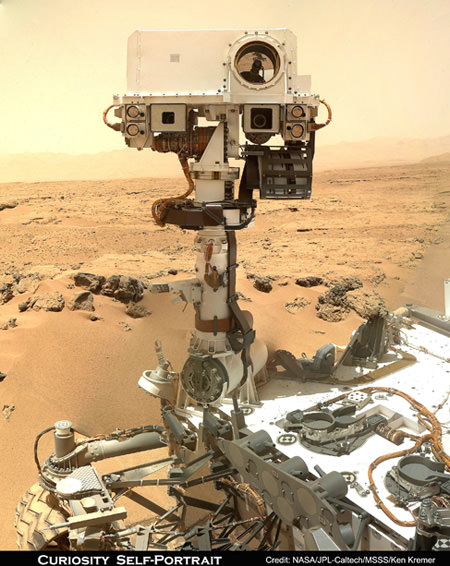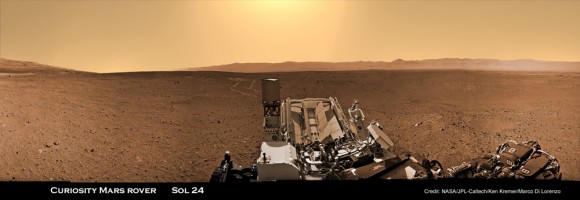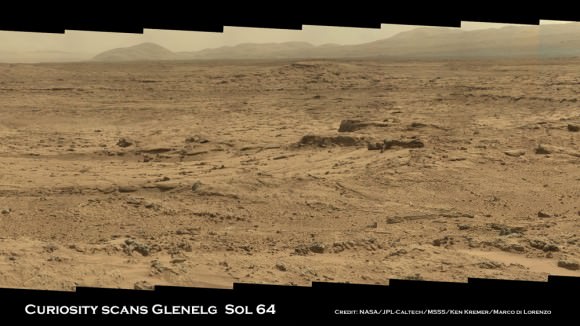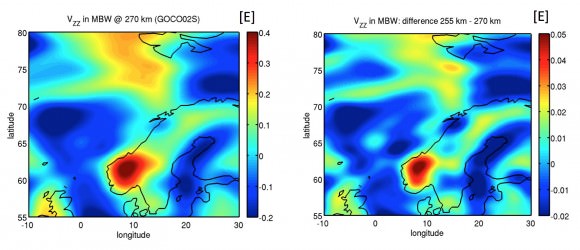Image caption: Seeing Double – Future Martian Sisters. NASA just announced plans to build and launch a new Mars science robotic rover in 2020 based on the design of the tremendously successful Curiosity rover which touched down safely inside Gale Crater on Aug. 6, 2012. This mosaic illustrates an imaginary Red Planet get-together of Curiosity and her yet to be constructed Martian sister. Credit: NASA/JPL-Caltech/MSSS/Ken Kremer
Curiosity will apparently get a sister after all and she’ll be born in 2020 – rising from the ashes of a near death experience.
The good news concerning approval of a future NASA Mars rover was announced this week by John Grunsfeld, NASA Associate Administrator for the Science Mission Directorate at NASA HQ, at the 2012 annual meeting of the AGU (American Geophysical Union) held in San Francisco.
What should Curiosity’s younger sister do? There are a multitude of great ideas, but a paucity of money in these very tough budget times – foremost among them is to gather and return the first ever Martian soil samples to Earth. What should the science goals be especially with regards to sample cache/return?
So, I asked these questions to Grunsfeld and leading Mars scientists, including Steve Squyres, Ray Arvidson and Jim Bell, the science team and camera leaders of NASA’s wildly successful Spirit and Opportunity Mars Exploration Rovers (MER). Opportunity is nearing the 9th anniversary of her Red Planet touchdown – and is exploring the most scientifically bountiful terrain yet of her entire mission at this very moment.
The design for the new Mars rover, let’s call it MSL 2, will be largely based on NASA’s hugely successful Curiosity Mars Science Laboratory (MSL) rover and the breathtaking rocket powered ‘Sky Crane’ landing architecture she so elegantly employed for touchdown barely 4 months ago on Aug. 6, 2012.
Grunsfeld and the researchers weighed in to Universe Today with their thoughts on this – “Will the 2020 Mars rover be focused on astrobiology and the search for life? Or, other goals like sample return or future human visits?”
“That question will ultimately be determined by the Science Definition Team,” Grunsfeld told me. “Historically the driving question behind our Mars exploration has been ‘are we alone in the universe?’ that includes searching for signs of conditions supportive of past and/or present life on Mars.”
Steve Squyres, of Cornell University in New York, says that “sample return is the next logical step” in Mars exploration.
“Simple… it should collect and cache a well-chosen set of samples for eventual return to Earth,” Squyres told me. “Doing so was the clear top priority of the recent planetary decadal survey.”
Squyres led the planetary decadel survey for the National Research Council (NRC) and is the scientific Principal Investigator for the Spirit and Opportunity MER rovers.
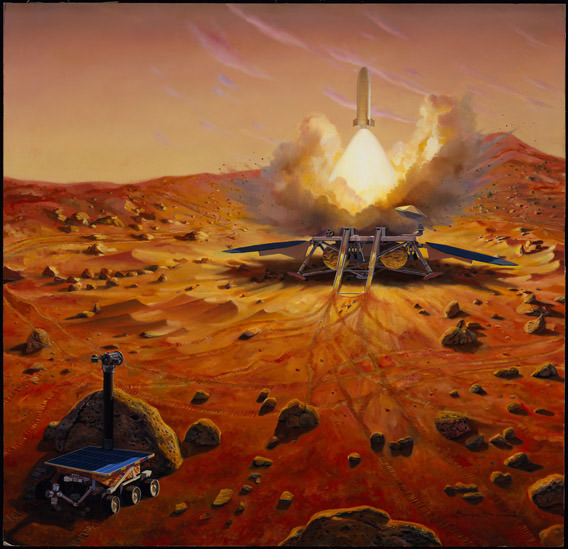
Image caption: Artists Concept for Mars Sample Return mission. Credit: NASA
“The recently announced 2020 rover has the potential to be directly responsive to the recommendations of the recent planetary decadal survey. The highest priority large mission identified by the Mars community, and indeed by the broader planetary community, in the decadal was a rover that would collect and cache a suite of samples for eventual return to Earth. The 2020 rover, which will be based on the highly capable MSL design, clearly can have that capability if it is appropriately equipped,” Squyres elaborated.
“The National Research Council planetary decadal survey documented the US planetary science community’s consensus views on future priorities for planetary exploration. The 2020 rover mission will be consistent with those priorities only if it collects and caches a suite of samples for eventual return to Earth,” Squyres told Universe Today.
Although retrieving and returning pristine samples from the Red Planet’s surface has long been the top priority for many researchers like Squyres, that ambitious goal would also be expensive and likely require a sequential series of flights to accomplish. But it is doable and would enable scientists on Earth to utilize every one of the most powerful science instruments at their disposal to help solve the most fundamental mysteries of all, like; ‘How did the Solar System form’, ’Did life ever exist on Mars’ and “Are We Alone?’
Ray Arvidson, of Washington University in St. Louis and deputy Principal Investigator for the MER rover, said this to Universe Today:
“For the 2020 rover I would frame the rationale and purpose as:
“*The surface area of Mars is equivalent to the surface area of Earth’s continents. The more we look the richer the geologic record relevant to ancient climatic conditions (e.g., the rover bed gravels found by MSL and the new clay hunting grounds Opportunity is exploring). Thus another MSL class rover and payload to a new site of paleo-environmental interest would be wonderful. Imagine trying to unravel Earth’s history by exploring three locations (MER+MSL) on the continents,” Arvidson informed me.
“*Given the rich, complex nature of the geologic record another MSL class rover exploring a new location will definitely help us narrow down the best place to go for sample return.”
“*For the 2020 rover include some engineering tests that will lead to a lower risk sample return mission. This could be what measurements to do to decide on which samples to acquire and keep, could be how to drill, handle, and cache, etc.”
Jim Bell, of Arizona State University and team leader for the MER Pancam cameras also feels that sample return is the top priority.
“I think it’s important that the 2020 rover adhere to the planetary science community’s stated goals for the next flagship-class mission to Mars–that it make significant progress towards a robotic Mars sample return’” Bell told me. “This was the judgment of the recent National Academy of Science’s Planetary Decadal Survey–representing the consensus of more than 1600 professional planetary scientists worldwide. The simplest way to implement that would be to make the 2020 rover a caching rover–able to store well-selected samples for potential later return to Earth by another mission.”
“I’m really excited about the opportunity to send a new MSL-class rover to Mars, and speaking with my Planetary Society President hat on, I think the public will be really excited to follow another mission as well.”
“Mars exploration is incredibly popular, and represents the best aspects of American engineering, innovation, and scientific exploration. That mission, and the continuing discoveries from Curiosity, Opportunity, and other missions, will help get us closer to answering age-old questions like, “are we alone?” Exciting!” Bell said.
By reutilizing the now proven MSL designs, NASA should be able to restrain and accurately estimate the development costs while simultaneously retiring a lot of the unknown risks associated with the construction and testing of MSL 1.
At the AGU briefing, Grunsfeld said that the 2020 rover will cost about $1.5 Billion, plus or minus $200 million, and fits within the president’s NASA budget request for 2013 and going forward. Curiosity cost about $2.5 Billion over the course of a 10 year development span.
“This mission concept fits within the current and projected Mars exploration budget, builds on the exciting discoveries of Curiosity, and takes advantage of a favorable launch opportunity,” says Grunsfeld.
The exact nature and actual mass of the 2020 rover’s science instruments will be decided by the Science Definition Team and also depends on the actual budget allocation received by NASA.
The surprising decision to fund MSL 2 comes despite the Obama Administrations cancellation earlier this year of NASA’s participation in a pair of missions to Mars, jointly proposed with the European Space Agency (ESA) – the 2016 Trace Gas Orbiter and the 2018 ExoMars rover. ESA has now forged a new alliance with Russia to carry out Mars exploration. NASA will fund instruments on both spacecraft.
In February 2012, the Obama Administration cut the planetary science budget by 20% and NASA was forced to withdrawn from the two joint Mars missions with ESA – as outlined earlier here and here.
So, I asked Grunsfeld, “Will the 2020 mission be international with participation by ESA or Roscosmos?”
“Yes, it will be international. Details will be worked out in the planning phase,” Grunsfeld replied.
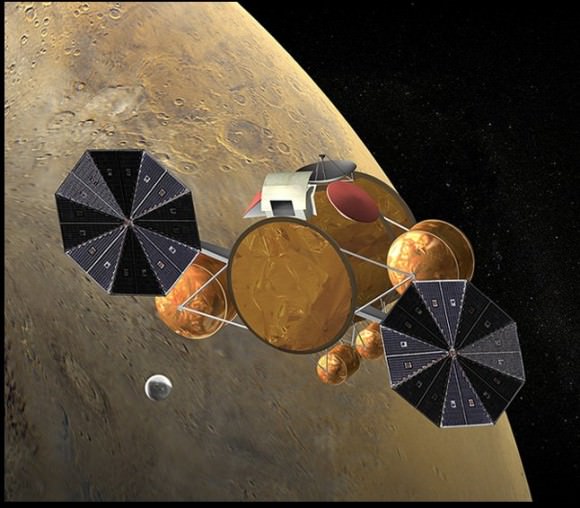
Image caption: Artist concept shows Earth return capsule with Red planet samples during rendezvous in Mars orbit. Credit: NASA
The 2020 launch window is next most favorable window after 2018 and would permit a higher weight of landed science instruments compared to Curiosity.
U.S. Rep. Adam Schiff (D-CA), who represents the area that is home to NASA’s Jet Propulsion Laboratory, and has worked to reverse the budget cuts, applauded the announcement of “the new robotic science rover set to launch in 2020.”
Schiff issued a statement that said, “While a 2020 launch would be favorable due to the alignment of Earth and Mars, a launch in 2018 would be even more advantageous as it would allow for an even greater payload to be launched to Mars. I will be working with NASA, the White House and my colleagues in Congress to see whether advancing the launch date is possible and what it would entail.”
Now it’s up to NASA to formulate a well defined and realistic plan that the politicians will support. The specific payload and science instruments for the 2020 mission will be openly competed following established processes for instrument selection. A science definition team will be appointed to outline the scientific objectives for the mission.
Stay tuned here for continuing updates on Curiosity and the future of Mars exploration and more.
** Here is your chance to do something positive & simple – and ‘Save Our Science’!
Cast your vote for Curiosity as TIME magazine Person of the Year. Vote now and avoid the long lines at the polling booth – before it’s too late. You only have until 11:59 p.m. on Dec. 12 to cast your vote online.
Ken Kremer
…..
Learn more about Curiosity’s groundbreaking discoveries and NASA missions at my upcoming free presentation for the general public at Princeton University.
Dec 11: Free Public lecture titled “Curiosity and the Search for Life on Mars (in 3 D)” and more including the Space Shuttle, Orion and SpaceX by Ken Kremer at Princeton University and the Amateur Astronomers Association of Princeton (AAAP) in Princeton, NJ at 8 PM – Princeton U campus at Peyton Hall, Astrophysics Dept. Students welcome.
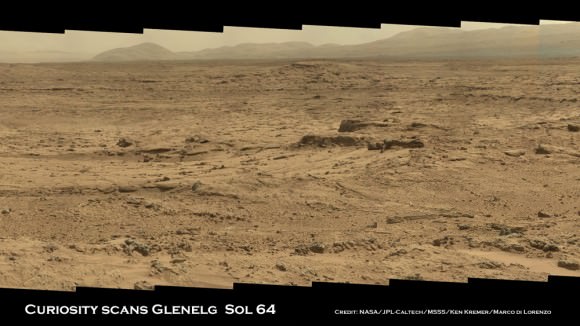
Image Caption: Panoramic mosaic shows gorgeous Glenelg terrain where Curiosity is now touring in search of first rocks to drill into and sample. The eroded rim of Gale crater and base of Mount Sharp seen in the distance. This is a cropped version of the wider mosaic as assembled from 75 images acquired by the Mastcam 100 camera on Sol 64 in October 2012. Credit: NASA/JPL-Caltech/MSSS/Ken Kremer/Marco Di Lorenzo

